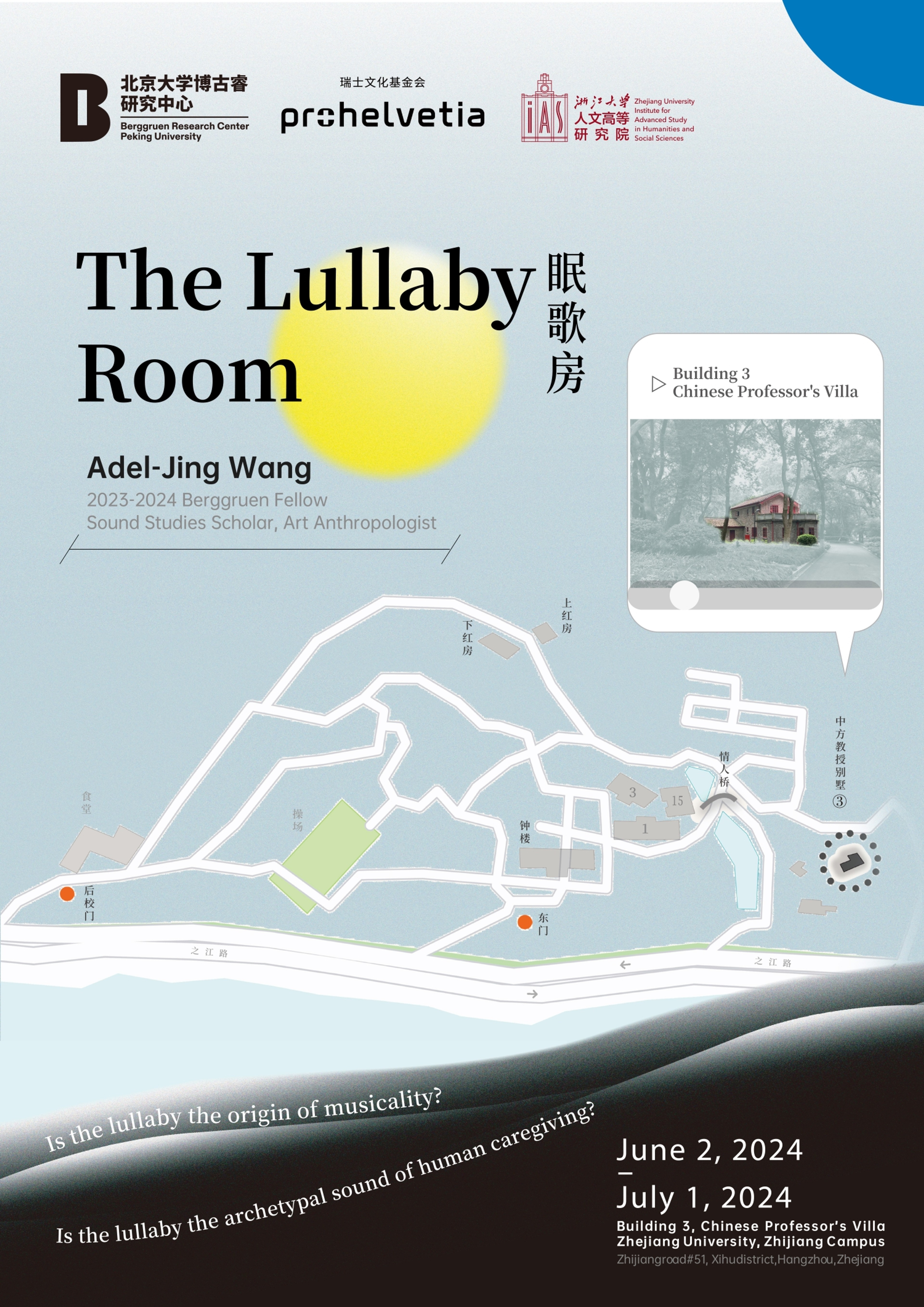The Lullaby Room

Is the lullaby the origin of musicality? Is the lullaby the archetypal sound of human caregiving?
A little over a year ago, I became a mother. During this time, the lullaby—a genre of music that had never entered my auditory awareness—became the most crucial form of sound in my life. I used lullabies to communicate with my child, and to complete the most important task of the day: putting him to sleep. What exactly gives the lullaby its magical power? Is it the melody, the rhythm, the repetition, or the voice that hums it?
I was fortunate to begin my research on inner voice and lullabies during a residency program with Pro Helvetia, the Swiss Arts Council last summer, attempting to transform my ideas into an audiovisual piece titled " Simpler, Slower and Repetitive." Even more fortunately, I am able to share this work with the public in such a special way, thanks to the support of the Berggruen Fellowship and the Zhejiang University Institute for Advanced Study in Humanities and Social Sciences (IAS). In every sense, I am not a professional. I am not a professional singer, a professor video editor, or a professional sound engineer. However, I believe that neither humming a lullaby nor producing inner sounds has anything to do with professionalism. What cannot be professionalized may be precisely be well connected to the secret of life nourishment.
The sound of the video was recorded with a binaural microphone, including the sound of me knitting a blanket and my own humming of lullabies. The final segment features a recording of myself and several students humming together in Ziyun cave on Baoshi Mountain during a deep listening retreat., The humming happened spontaneously while we looked up at the cave opening. Each time I listen to the recording, I find it precious.
When the staff of IAS led me to this small room that could be used for displaying the work, it was still an office for visiting scholars. It had been converted into a recording studio, although it had never been used as one. The imagination and reality of this room's inner events, and the scenery that people will pass through when reaching the cabin, made me feel it was an appropriate space for this piece. In keeping with the naming style of the old buildings at the Zhejiang Campus, I named this small room "The Lullaby Room," which also serves as the name of this exhibition.
About the Creator
Based in Hangzhou, China, Jing-Adel Wang is a sound studies scholar, art anthropologist, and a curator and practitioner in of sound art. She is the a 2023-2024 Berggruen Scholar. She is and currently an Associate Professor of sound studies at Zhejiang University, China. She Previously, she was a Visiting Professorvisiting scholar at MIT’s Aanthropology Department (2019-2020), a visiting scholar atand at the School of Creative Media at City University of Hong Kong (2017.2). She isWang was the residency resident artist at The Swiss Arts Council Pro Helvetia from (2022-2023). Academically, she is the author of the bookShe is the author of Half Sound, Half Philosophy: Aesthetics, Politics, and History of China‘s Sound Art (Bloomsbury, 2021) (in English) and Sound and Affect: An Anthropology of China’s Ssound Practice (2017) (in Chinese). Artistically, she works with field -recordings, voice-based multimedia art and performance installations and performances, and multimedia art creation. She considers theoretical research and artistic practice not as separate independent but as in reciprocal relation in producing concepts for thought and affects for co-presence.
Supporting Organizations
Institute for Advanced Study in Humanities and Social Sciences (IAS) at Zhejiang University is an international academic research institute that covers all disciplines in humanities and social sciences with the mission of theoretical, fundamental and exploratory research, and is committed to advancing originality, excellence and diversity. We recruit multidisciplinary cohort to foster intellectual encounters. IAS stands as a distinctive academic research establishment, which offers sufficient funds, quiet and cozy environment and adequate freedom and flexibility to free scholars from teaching and administrative obligations and to concentrate them on research and engage them in genuine cross-disciplinary communications with those from different cultural and disciplinary backgrounds.
Pro Helvetia, the Swiss Arts Council supports artists and cultural practitioners from Switzerland and is committed to international cultural exchange. Pro Helvetia Shanghai is founded in 2010 and represents the Swiss Arts Council in China. Its aim is to encourage dialogue between Swiss and Chinese cultural practitioners and institutions by supporting projects that enhance the exchange of knowledge and experience in the cultural field.
Audiovisual Exhibition: The Lullaby Room
Creator:Adel-Jing Wang (Berggruen Fellow 2023-2024)
Open:14:00 to 17:00 on June 2, 2024
Duration: June 1, 2024-July 1, 2024
Venue: Building 3, Chinese Professor’s Villa, Zhejiang University, Zhijiang Campus, Zhijiang road #51, Xihu district, Hangzhou, Zhejiang
Audiovisual Work:
Simpler, Slower and Repetitive
Duration: 13’45”
Single channel HD video, binaural recording
Color, sound